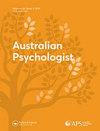抑郁和焦虑的目标动机:情绪调节困难的中介作用
IF 2
4区 心理学
Q2 PSYCHOLOGY, MULTIDISCIPLINARY
引用次数: 1
摘要
摘要目的目标定向(接近与回避)和情绪调节困难与抑郁和焦虑独立相关。然而,缺乏同时研究抑郁和焦虑的接近和回避目标动机以及情绪调节困难的研究。本研究旨在将这些单独的调查线结合起来,从动机和情绪调节的角度更好地理解抑郁和焦虑的本质。具体而言,它旨在调查情绪调节困难的增加是否在一定程度上间接介导了接近和回避目标动机与抑郁和焦虑症状之间的明显关系。方法一项在线研究包括210名通过Facebook和MTurk招募的参与者。参与者完成了自我报告的测量,以评估他们的接近和回避目标动机、情绪调节以及抑郁和焦虑症状。结果与预测相反,接近动机受损与抑郁症状增加之间没有显著关系。然而,正如预测的那样,回避目标动机与抑郁和焦虑症状有关。此外,情绪调节困难的增加间接介导了回避目标动机与抑郁和焦虑症状之间的关系。结论我们的研究结果表明,情绪调节困难在解释目标追求中的回避(而非接近)动机与情绪症状之间的关系方面起着重要作用。关键点关于这个话题已经知道的内容:许多研究已经研究了与焦虑和抑郁相关的方法和回避“目标”。有强有力的经验证据表明,回避目标追求(专注于威胁结果)与焦虑有关,而接近目标追求受损(专注于奖励结果)与抑郁有关。然而,研究很少研究驱动追求目标的潜在“动机”。动机代表了一种比表面目标层面更主要的动机形式。例如,潜在的回避动机可能会激发和推动接近目标的追求。我们还知道,情绪调节与焦虑和抑郁等情绪症状有关。尽管动机和情绪调节这两个系统的理论已经很成熟,但研究很少调查不同的方法和回避动机以及情绪调节与抑郁和焦虑之间的关系,而本研究正是针对这一点的。本主题补充道:研究结果从动机和情绪调节的角度了解了抑郁和焦虑的本质。值得注意的是,回避动机导致情绪调节困难,这反过来间接解释了回避动机(而不是接近动机)与抑郁和焦虑之间的关系。当同时考虑动机和情绪调节时,这些发现进一步为理论发展提供了信息。从动机-情绪调节的角度来看,这些发现为正在开发的治疗焦虑和抑郁症状的更有效干预措施提供了信息。本文章由计算机程序翻译,如有差异,请以英文原文为准。
Goal motives in depression and anxiety: the mediating role of emotion regulation difficulties
ABSTRACT Objectives Goal orientation (approach versus avoidance) and difficulties in emotion regulation have been independently associated with depression and anxiety. However, there is a lack of research that has simultaneously examined approach and avoidance goal motives and emotion regulation difficulties in depression and anxiety. The present study aims to draw together these separate lines of investigation to better understand the nature of depression and anxiety from a motivational and emotional regulation perspective. Specifically, it aims to investigate whether increased emotion regulation difficulties indirectly mediate, in part, distinct relationships between approach and avoidance goal motives and depressive and anxious symptoms. Method An online study comprised 210 participants recruited via Facebook and MTurk. Participants completed self-reported measures to rate their approach and avoidance goal motives, emotion regulation and depressive and anxious symptoms. Results Counter to prediction, no significant relationship was demonstrated between impaired approach motives and increased depressive symptoms. However, as predicted, avoidance goal motives were associated with depressive and anxious symptoms. Further, increased emotion regulation difficulties indirectly mediated relationships between avoidance goal motives and both depressive and anxious symptoms. Conclusion Our findings indicate that emotion regulation difficulties play a significant role in explaining the relationship between avoidance (but not approach) oriented motives in goal pursuit and emotional symptom. Key Points What is already known about this topic: Much research has examined approach and avoidance ‘goals’ in relation to anxiety and depression. There is strong empirical evidence to indicate that avoidance goal pursuit (focused on threatening outcomes) is associated with anxiety whereas impaired approach goal pursuit (focused on reward outcomes) is associated with depression. However, research has rarely studied underlying ‘motives’ that drive goal pursuit. Motives represent a more primary form of motivation than that expressed at the surface goal level. For instance, it is possible that an underlying avoidance motive energises and drives approach goal pursuit. We also know that emotion regulation is implicated in emotional symptoms such as anxiety and depression. Despite well-developed two-system theories of motivation and emotion regulation, research has rarely investigated the relationship between distinct approach and avoidance motives and emotion regulation in relation to depression and anxiety, which the present study addressed. What this topic adds: The research findings inform an understanding of the nature of depression and anxiety from both a motivation and emotion regulation perspective. Notably, avoidance motives gave rise to emotional regulation difficulties, which in turn indirectly explained the relationship between avoidance motives (but not approach motives) and depression and anxiety. These findings further inform theoretical developments when considering motivation and emotion regulation simultaneously. The findings inform the ongoing development of more effective interventions in treating anxious and depressive symptoms, from a motivation-emotion regulation perspective.
求助全文
通过发布文献求助,成功后即可免费获取论文全文。
去求助
来源期刊

Australian Psychologist
PSYCHOLOGY, MULTIDISCIPLINARY-
CiteScore
3.70
自引率
5.30%
发文量
32
期刊介绍:
The Australian Psychologist is the official applied practice and public policy journal of the Australian Psychological Society. As such, the journal solicits articles covering current issues in psychology, the science and practice of psychology, and psychology"s contribution to public policy, with particular emphasis on the Australian context. Periodically, Australian Psychological Society documents, including but not limited to, position papers, reports of the Society, ethics information, surveys of the membership, announcements, and selected award addresses may appear in the journal.
 求助内容:
求助内容: 应助结果提醒方式:
应助结果提醒方式:


